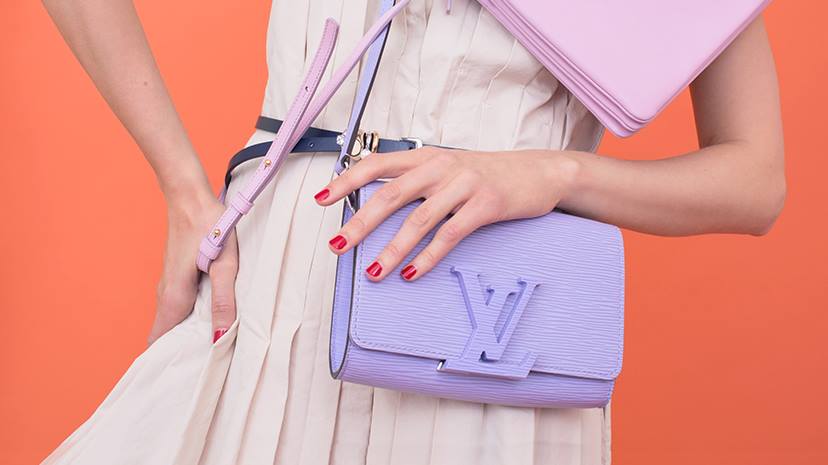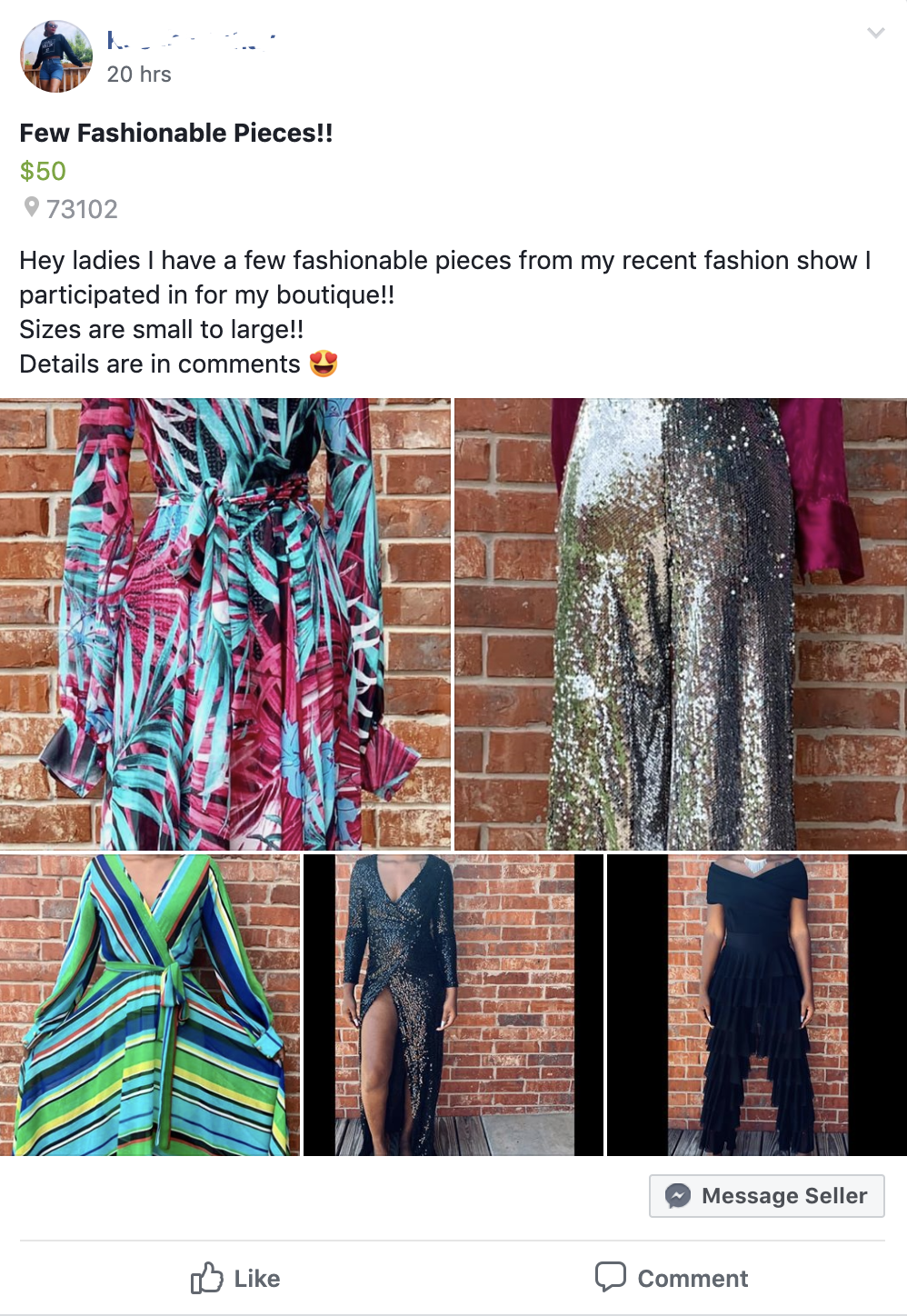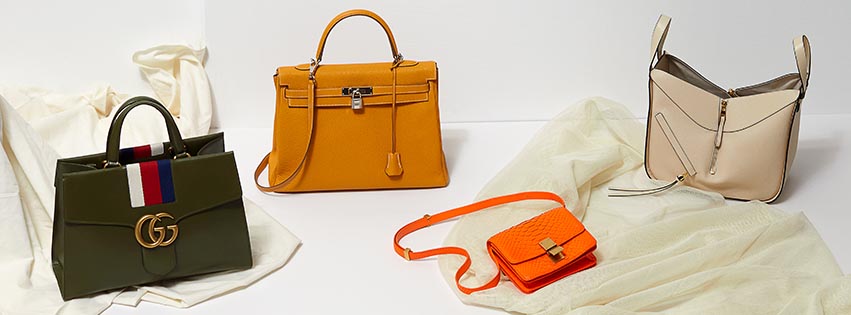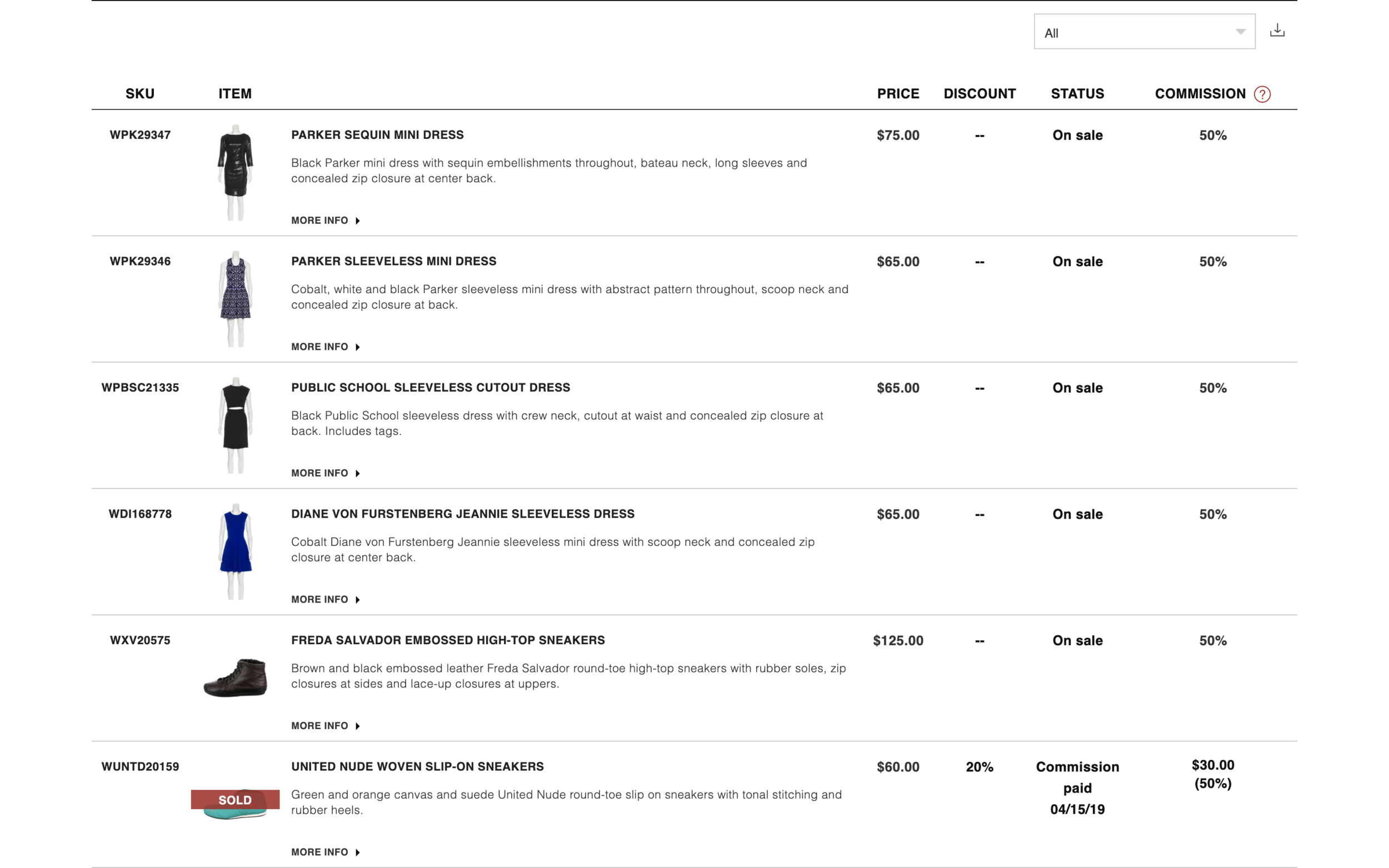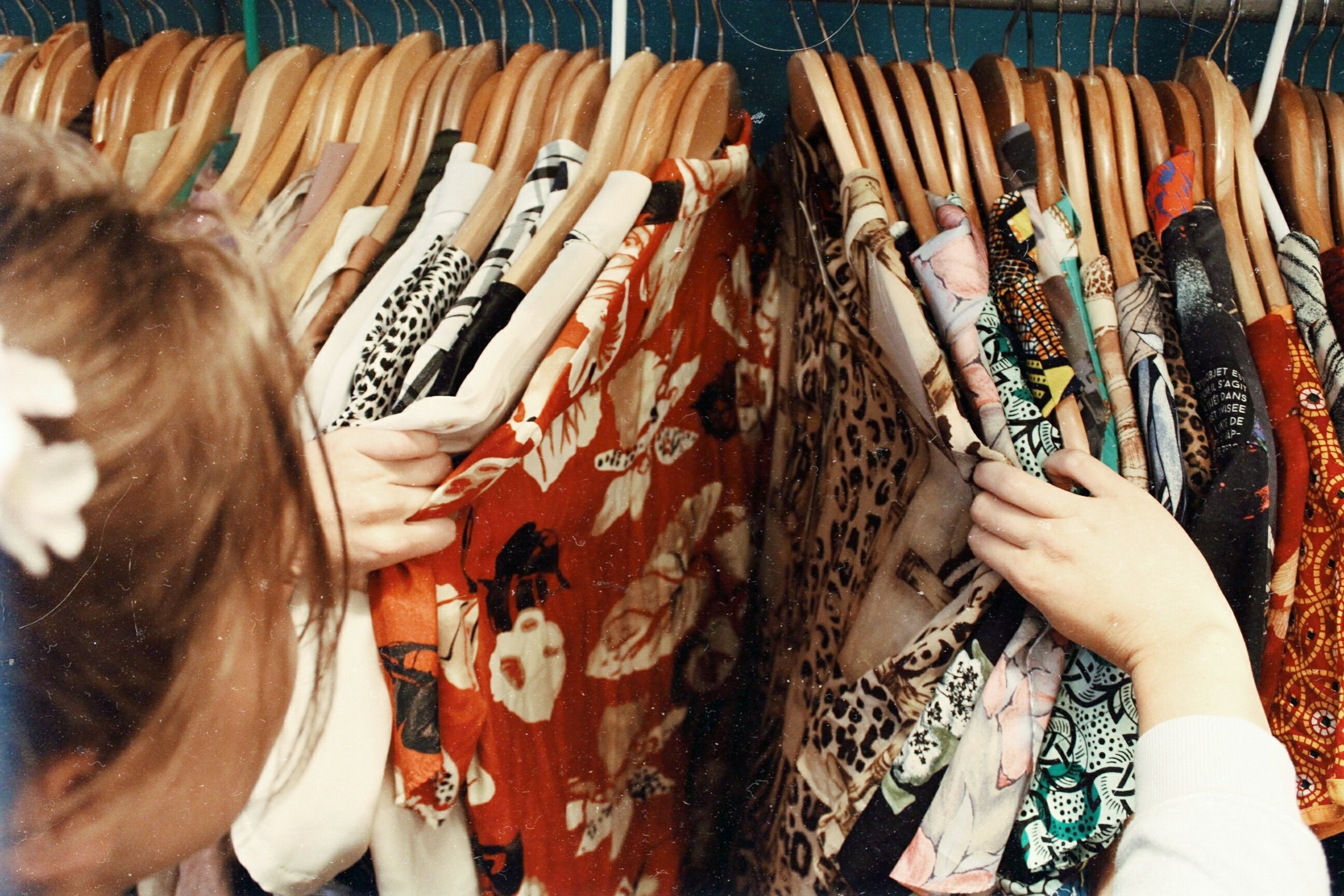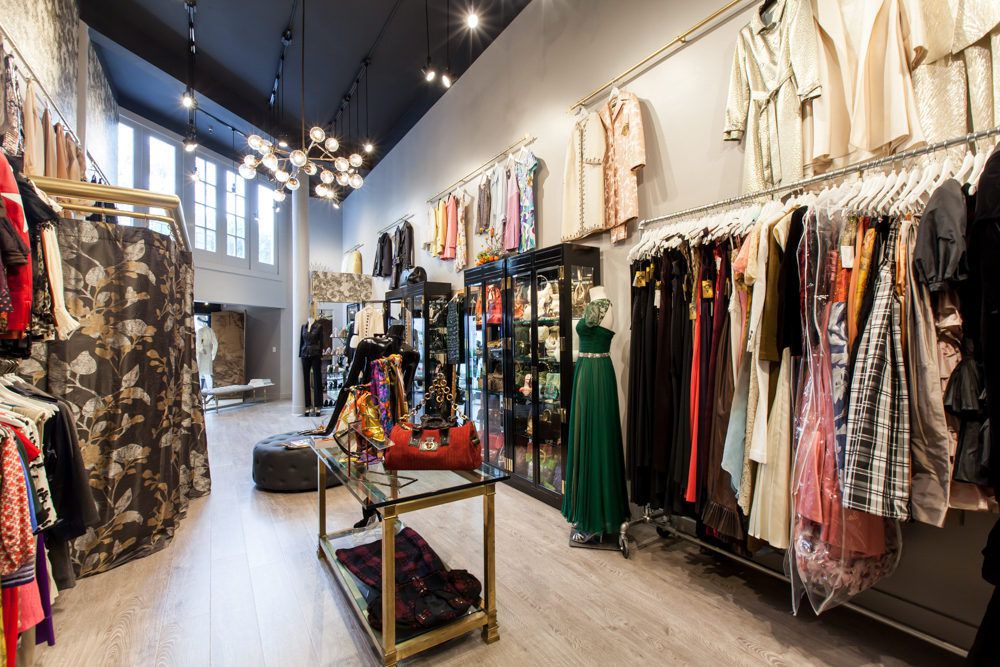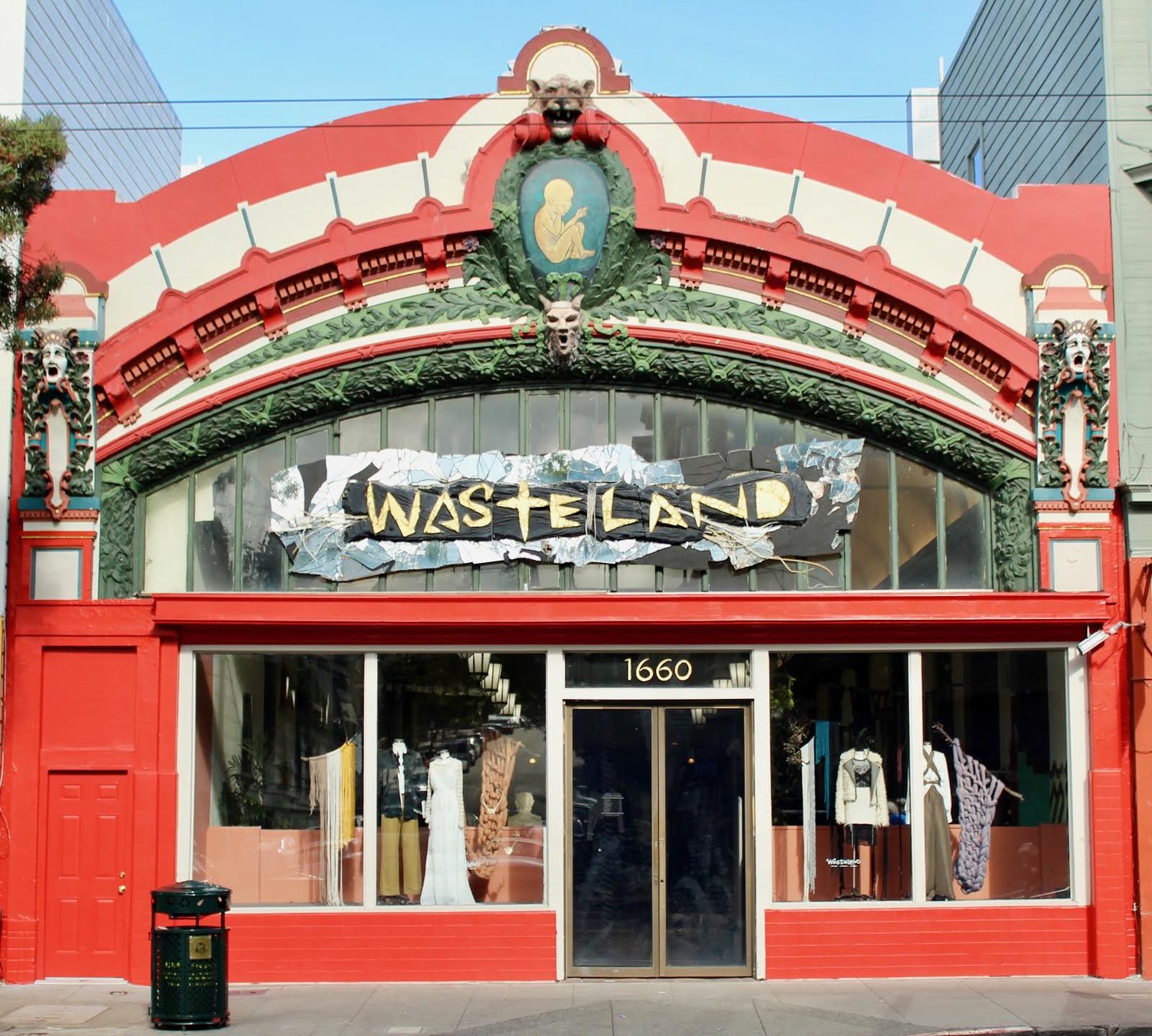The Rockyt Guide to Cashing Out Your Closet in San Francisco
On any given day, someone who has just discovered Marie Kondo’s The Life-Changing Magic of Tidying Up is sorting a pile of clothes, determining what sparks joy, and debating what to do with the castoffs. Charity shops—like Goodwill—are the biggest beneficiaries of the decluttering craze, but for-profit secondhand clothing sellers are also enjoying a surge in new inventory.
For folks who want to monetize their closets, there are a handful of online options. Each one has its advantages and disadvantages, so we’ve set out to break down the details in one place to help you decide which one works best for you.
Sell or Consign Online
Selling online can be the easier solution if you have a busy schedule. On one hand, you don’t have to think about making your way to a physical store during business hours, on the other, you may have less flexibility—or even incur charges—when it comes to keeping items that don’t sell. Below, we’re explaining online second hand or consignment options that operate out of the Bay Area. (While there are still a few more options out there, we like to keep it local on Rockyt.) For each company, we’ve included a section on how the process works, shipping, earnings, and additional information that’s “good to know.”
eBay
Since its founding in 1995, San Jose-based eBay has shifted from small-time resellers to full-time retailers hawking their wares on the Internet, but hobby resellers can still use the platform.
How it Works
Sellers on eBay choose one of two formats: auction or fixed-pricing, and give potential buyers the chance to make offers on items up for sale. The company has tons of data—that kind of thing happens when you’ve been in the biz for almost 25 years—and eBay’s seller tools will suggest the best starting price for that faux fur coat or those too-small shoes you bought on final sale. That said, it’s up to you how much you want to charge. When creating a listing, sellers can be as vague or detailed as they want, though details like brand, size, color, material, condition, and location will help a listing appear in more searches.
While listings on eBay expire after 1-10 days, sellers can set items to automatically relist if they doesn’t sell.
Shipping
Shipping costs vary according to the buyer’s location, but sellers can use eBay’s seller tools to calculate and assess shipping charges, or even offer free shipping on items, (in which case the seller will be responsible for the shipping cost.) Sellers who ship through USPS using eBay tools receive a small discount off the retail shipping rate.
Earnings
When you list an item for sale, eBay assesses a $0.35 insertion fee per listing, per category. (If you choose to list your item in two categories, you also pay an insertion fee for the second category.) Every month, eBay gives you up to 50 zero insertion fee listings, so the occasional closet cleanout seller is unlikely to incur insertion fees. That said, insertion fees are nonrefundable if your item doesn't sell.
If you relist your item, eBay charges an insertion fee for the original listing and each time your item is relisted. However, your monthly zero insertion fee listings can cover each of your relisted items until they're used up. Relisting applies in most categories, but there are some exclusions.
When you sell an item, the standard selling fee is typically 10% of the total sales price as a final value fee.
A seller’s earnings are held in their PayPal account until the seller submits a request through PayPal to withdraw funds to their bank account.
Good To Know
While it’s always a good idea to list measurements and specific details and flaws on fashion items, prospective buyers can also submit questions about an item through the site. eBay will facilitate returns, but it’s up to the buyer when creating a listing whether they will accept returns. Items with a return option are more likely to sell, and the seller can require the buyer to pay the return shipping.
When a seller sells an item, they send the invoice to the buyer, along with any reminders of the rules of the transaction, (i.e., “Winning buyer must submit payment within 48 hours.”) A seller should never ship the item until receiving payment from the buyer. If the buyer fails to pay, the seller can submit a ticket through eBay’s conflict resolution system, and eBay will eventually refund the seller’s account for the final value fee if the buyer doesn’t pay. (Pro tip: this can take a while.)
The site also includes a rating system, allowing buyers and sellers to rate one another on the transaction. Generally, it’s a hassle to rate anyone below a perfect score because eBay will ask for extensive feedback. As long as the buyer pays, sellers generally give them a top rating.
Facebook Buy-Sell-Trade
Facebook isn’t just a destination for baby photos and political arguments: it’s also a platform for selling the cute clothes you don’t need. There are literally thousands of buy-sell-trade (BST) groups on the site that give sellers control over their transactions.
How It Works
To start, you must join or create a BST group. Many groups are dedicated to a specific brand or type of fashion, but you can also find geographically-oriented groups like SF & Bay Area Buy/Sell/Trade or San Francisco Buy, Sell, Trade, and Free Stuff. Some groups have a waiting period while an admin approves you, and most have at least a few rules regarding posting.
Typical rules include specifications like, “you must include the original stock photo plus a non-stock photo of the item you’re selling.” For example, if you want to sell overalls from Madewell, you would need to include both the stock photo from Madewell’s website of those overalls and a photo of the actual pair of overalls you’re selling. (Racked’s deep dive into the BST world is worth a read if you’re new to the concept.)
Subject to the group’s rules, you post a photo and description, set your price, answer questions, and finalize sales, all through Facebook. Haggling usually occurs via DMs so as not to trigger a series of notifications for other group members. When a seller and buy reach a deal, the seller send the buyer a PayPal invoice through Facebook Messenger.
Shipping
Sellers sets the rules, so—barring explicit guidelines from the BST group—a seller determines the shipping carrier and timeline, and assesses the appropriate fee to the buyer. Unlike some of the selling options in this article, there’s no shipping discount for BST groups because you are selling as an individual.
Earnings
This is where BST groups really shine. While they may not be as convenient as selling apps, Facebook does not currently take a cut from BST sales. Most groups require transactions run through PayPal since PayPal offers buyer protection. PayPal takes a 2.9% cut of the transaction fee, which is significantly lower than any other seller fee option on this list. The rest of the money goes to the seller.
Good to Know
No templates. No guidelines. No pricing suggestions. BST groups are the wild west of resale, but they work for the right seller. If you’re someone who understands the value of the items in your closet—particularly rare or limited edition pieces, even from budget retailers like H&M and Target—BST groups offer the best margins.
Keep in mind there are no pseudonyms in these groups, like you might have on Poshmark or eBay; you are conducting transactions in your own name, and your reputation is on the line. Follow the rules or you risk being booted from the group by an admin…and bringing shame upon yourself.
Poshmark
Redwood City-based Poshmark describes itself as “the largest social marketplace for fashion where anyone can buy, sell and share their style with others.” Social media pros love the platform. We’ve heard some local bloggers pay their rent re-selling gifted items on the app.
How It Works
Poshmark gives sellers control over product presentation and pricing. The critical elements of the Poshmark process are straightforward. Sellers can photograph their items and write product descriptions within the app. There’s no expiration date on listings, so items stay posted indefinitely. Sellers can resurface their listings by editing and resharing them. Poshmark also makes it easy to promote your own listings across your social networks.
Buyers can ask additional questions about an item through comments, and have the opportunity to make an offer on an item. Once an offer is made, the seller has 24 hours to accept, decline, or counter-offer. The company encourages pre-purchase inquiries between buyers and sellers, and tells Rockyt, “Generally, we’ve found that conversations between buyers and sellers before a purchase is made help buyers decide whether something is right for them, especially when it comes to fit –– that’s the beauty of the peer-to-peer social shopping platform.”
Shipping
The seller is responsible for sending items to the buyer via USPS Priority Mail. Poshmark defaults to charging buyers a $6.49 flat rate for shipping, but a seller can offer discounted shipping to drive sales. (Discounted shipping amounts are deducted from the seller’s profits.) Poshmark occasionally runs Closet Cleanout promotions, offering discounted or free shipping on items when sellers drop their prices by at least 10%. Labels for packages over 5 pounds incur a label upgrade fee paid for by the seller.
Earnings
There’s no insertion fee to create a listing, but Poshmark takes a 20% cut of each sale. For items selling for less than $15, Poshmark receives a flat rate of $2.95 per item. Poshmark waits to deposit earnings into a seller’s account until the buyer confirms receipt and satisfaction. A seller’s revenue is held in their Poshmark account until the seller submits a request through the app to withdraw funds to their bank account.
Good to Know
Poshmark touts the ease of using the app, noting that a seller can list an item in as little as 60 seconds. That’s something that clearly appeals to the Tidying Up With Marie Kondo crowd: a rep for the brand tells Rockyt, “In the first week of January 2019, Poshmark saw a 64% increase in listings compared to January 2018.”
The company also promotes social interaction to drive sales. App users are encouraged to follow other users and share their listings. Three times daily, Poshmark holds online “Posh parties,” when certain categories of items, (i.e, Tory Burch items or weekend casual pieces) are featured. Sellers list or repost relevant items, and community managers called Party Hosts select items from that assortment as “host picks.” While a host pick may receive greater exposure—and a flood of congratulatory emojis—there’s no guarantee that a host pick will sell.
Unlike most of its online resale competitors, Poshmark will only facilitate a return if the buyer reports there is undisclosed damage to the item, there is an incorrect or missing item in the order, the item is not as described in the listing, or the item is not authentic
ThredUp
When it’s time to clear out your closet, ThredUp—”the largest online consignment and thrift store”—is ready to receive your castoffs. The company processes over 100,000 items every day, and posts 1,000 items online every single hour.
How It Works
The San Francisco-based company emails sellers a shipping label for a “kit,” and sellers are encouraged to fill up their own box with as many items as possible. There’s no guarantee that ThredUp will accept all the items in the box. According to the company’s FAQs, they accept approximately 40% of submitted items. If a seller wants their rejects back, they have to pay $10, but a rep for the company tells Rockyt the “majority of sellers prefer to send in their garments and never see them again.”
Once ThredUp receives and processes a kit, (e.g., weeds out the rejects and photographs and creates product descriptions for accepted items), the seller has seven days to choose either a lower-amount upfront buyout, or higher-amount consignment pricing. For items sold through consignment, the seller can edit the price that ThredUp has suggested for the item, and the seller’s cut will increase or decrease accordingly.
If consignment items do not sell within 84 days, the seller will have an additional 14 days to reclaim those unsold items. After the 14 day period, items become property of ThredUP and will no longer be reclaimable.
Rejected items from sellers who decline return protection and unsold, unclaimed items are handled in a few ways. According to a company rep, the majority are processed through third-party recyclers, who must meet and adhere to ThredUp’s Aftermarket Partner Code of Conduct, (which requires transparency, integrity, awareness of environmental impact, and respect for developing nations). Through its ThredUp Rescues program, ThredUp bundles and sells a “small percentage” of the total unaccepted and unwanted items received by “bundling them into bulk quantities and selling them for less than the costs we incur to process them.”
Shipping
Sellers don’t have to worry about this because ThredUp shipping is either the buyer’s responsibility or comped as part of a promotion. But—in case you were wondering—shipping is charged at a flat rate and offered at two speeds: standard and expedited.
All orders totaling over $79 ship standard for free. Orders under $79 ship for $5.99. Most items can be returned within a 14-day window, as long as the item wasn’t marked “final sale.” (Accessories like handbags are final sale.) Returns sent with a ThredUp provided label are subject to a flat $8.99 fee.
Earnings
ThredUp has a pricing guide which gives pricing ranges for items. Overall, prices on the site are extremely affordable, which means commissions are small. Payout tends to be between 5% and 25% of the final selling price, but can go as high as 80%. Pricier items earn more commission, but cheaper items receive a pittance: if ThredUp sells your old H&M skirt for $11.99, your commission is only $0.60.
All accepted items in a kit are listed for sale on consignment unless the seller opts to accept the upfront offer that is extended in the item's first seven days of listing. For anyone hoping to mine their closet for money, consignment is the better option, When an item is listed on consignment, the seller controls the listing price and, in turn, their final payout potential. But, while a seller can increase the list price of an item through their ThredUp dashboard, increasing the price too much could scare away customers who are accustomed to paying ThredUp’s suggested prices.
Good to Know
ThredUp offers an easy selling experience when you’re looking to purge your closet, especially if you’ve got a lot of mall brands. While the company happily accepts and sells designer clothing as well, it has really cornered the market in flipping J. Crew, Banana Republic, Ann Taylor, and Old Navy. Sellers simply send in a box and wait for payday.
And about that wait: the processing time for ThredUp kits can be lengthy. Granted, current processing times are likely longer due to the popularity of Marie Kondo’s Netflix series, but we submitted a kit in late January that wasn’t processed until March 9.
The RealReal
Authenticated luxury consignment site The RealReal is a treasure trove of designer goods. TRR likes to tout that it has “an expert behind every item,” to guarantee that buyers don’t run into the counterfeit problems prevalent on seller-controlled sites.
How It Works
Sellers request a “consignment kit” and receive a free shipping label to send in their items. TRR maintains a list of accepted brands, so sellers need to ensure that their items actually appear on the list before shipping. The company maintains consignment offices in seven cities, including San Francisco, for those who wish to make an appointment and deliver their items in person. The company also has brick and mortar stores in Los Angeles and New York.
A seller dashboard on The RealReal
TRR processes items (e.g. photographing pieces and writing product descriptions, including measurements), and posts them to the website in less than a week. The seller has access to a dashboard to see which items have sold, but cannot change the pricing.
Generally, clothes and shoes on the site are subject to a 20% discount off the original price with the code “REAL.” The 20% discount cannot be combined with already-discounted items. The 20% REAL promo code doesn’t apply to certain designers, but the listing will always clearly indicate if promo codes don’t apply.
When a listing is 30-90 days old, TRR may experiment with 25-30% off pricing for about 3 days off and on (depending on what other sales are running on the site.) Items that languish 90-180 days get 40-50% off in a one-day monthly blow out sale, and anything older might get 60% off. A rep for the company explained, “Our markdown schedule is set up this way because, in our experience, if an item doesn't sell at the initial price within the first 30 days (and thousands of views from our 8 million shoppers), then it most likely won't.”
Most full-priced items (and items discounted up to 30% off the original price) can be returned by requesting a return authorization within 14 days. Items that are final sale are clearly indicated as such in the listing. A seller does not receive commission on an item until the return period has expired.
Shipping
Standard shipping from TheRealReal starts at $11.95 per order. Returns are subject to a return shipping fee of $11.95. When you consider that most retail startups are bleeding money in shipping costs, both fees make sense. Sellers needn’t concern themselves with those numbers: TRR places the burden of shipping costs on the buyer.
Earnings
The RealReal pays commission in tiered categories based on the original resale list price of the item. Items with an original resale list price of $145 or less are subject to a 40% commission, and items originally priced between $146 - $195 earn a 50% commission. The highest commission on the site, 85%, is for watches with a resale list price of $2,500 or more.
If you choose to receive your payment as site credit, you’ll earn an extra 5%. The full commission chart is available online.
Sellers are also categorized on the platform. Sellers who have moved up to $1500 of merchandise on the site each year earn 55% commission, those with sales up to $9,999 earn 60%, and top sellers who clear more than $10,000 in sales annually earn VIP status and a 70% commission.
Good to Know
While TRR doesn’t let sellers control the pricing, they are probably the most seller-friendly of the online consignment options. At any time before an item sells, the seller can call or email the consignor relations team, or reach out to their account rep to reclaim their items. A rep for the company explains to Rockyt, “We remove the listing right away, and the return package is shipped out within 30 days. We're not currently charging for return shipping.” Sellers can choose to claim their earnings either through a check or site credit.
In-Person Consignment/Selling
Selling online comes with a certain ease, but selling or consigning your clothes at local brick and mortar stores is a greener alternative. (No shipping emissions, no cardboard boxes, no guilt.) It’s also a less time-intensive process for the seller: you get to eliminate the effort of measuring your garments, photographing every little fabric snag, answering prospective buyers’ questions, and shipping your sales. The trade-off is you typically earn less from each sale. Below, we’re discussing our favorite San Francisco stores specializing in resale and consignment merchandise.
Sui Generis
For luxury consignment within the city, try Sui Generis’s two San Francisco locations: a men’s store at 2231 Market Street and a women’s store at 2147 Union Street.
How It Works
Consignments are accepted by appointment only, and sellers must call for an appointment. (Women's: 415-800-7584. Men's: 415-437-2231.) First-time consignors should bring in over $500 worth of consignable items. The store accepts new and pre-owned designer handbags, jewelry, shoes, apparel, and accessories. They take care of all the details—from pricing to storage to e-commerce posting. Sui Generis also sells on 1stDibs, eBay, Tradesy, and SnobSwap.
Earnings
Consignors are paid 40% of the selling price.
Good to Know
Sui Generis maintains a list of brands they will consider for consignment. If your pieces aren’t on this list, don’t bother.
Wasteland
Wasteland has been doin’ its resale thing in the Bay Area since the mid-80s. It started as a indie vintage store in Berkeley, and now calls Haight Street home.
How It Works
Drop by the store with clothes, shoes and accessories between 12 and 6pm daily. Pieces should be clean and in new or almost-new condition. You don’t need an appointment to sell, but you must be at least 18 with a valid photo ID. Wait times are usually 5-20 minutes, but there’s often no wait on weekdays.
The buyer will give you a rundown of what the store is currently buying, and sort through your items deciding what to buy, and how much to price it for. They review the stack with you, telling you what they will give you for each item, so you have a chance to object and reclaim your item if the price isn’t right.
Earnings
Wasteland pays 35% of the total marked prices. Payments to sellers are made on the spot. Payouts over $50 are issued via check.
Good to Know
Wasteland tends to gravitate toward designer pieces and true vintage, and everything needs to be in tip-top shape. Even designer items may get passed over if they aren’t in pristine condition. While they may select the occasional mall brand piece, don’t expect to sell your J. Crew haul here.
Crossroads Trading Company
Carrying everything from H&M to Halston, Crossroads makes closet cleanout easy.
How It Works
Crossroads stores accept walk-ins for selling seven days a week. You must be at least 18 with a valid photo ID to sell. There are twelve locations in Northern California, including four in San Francisco. Crossroads offers three outright selling options: drop in and wait with your pieces in the store, drop-off a bag of items and pick up the rejects after 24 hours, or mail your items in. (Sellers can request a “roomy” mailer bag with a pre-paid label online.)
If you choose to sell by mail, review Crossroads’s Terms of Service first. Some highlights: you can only mail in clothing, and you must send the bag from the continental U.S. “All items purchased through a mail-in bag will be priced immediately for sale without seller approval and will become the property of Crossroads Trading.” When you submit a bag request form, you also must choose whether you want Crossroads to donate or return un-purchased items. If you choose “return,” you’ll be charged $15 for return shipping.
For high-end designer items, Crossroads also offers consignment. (Pro-tip: Even if you have a dress or shoes the store would consider buying for cash, you can request consignment.) If a consignment item doesn’t sell after 30 days, you can reclaim it.
Items, whether submitted in store or via mail, must be clean and in like-new condition. (No stains, no holes, no missing buttons, no matter how good the piece is.) Crossroads specializes in trend-driven pieces, so don’t drop off your mom’s vintage evening gown stash here.
Earnings
You can choose to cash out at 30% of the listed value of your items, or take a store credit trade deal at 50%. Store credit is issued via a card, and does not expire.
For consignment items, payout is 50% for pieces priced up to $199.99, 55% for items between $200 and $999.99, 65% for items priced between $1000 and $4999.99, and 70% for items priced over $5000.
Good to Know
The default mode at Crossroads is for the buyer to sort and tag your items as they go. Once they tag an item, they toss it in an accepted items bin to be placed on the sales floor. Buyers typically do not announce how much they’re pricing an item at; they just tag and input it in the register. They’ll give you two totals at the end of the transaction—a trade-in value and a cash value—and return the rejects to you. If you’re on the fence about letting a piece go below a certain price, make sure you ask the buyer before they tag it.
Buffalo Exchange
If you’ve lived in any major city in America, you’ve probably shopped or sold at Buffalo Exchange by now. This is a resale behemoth.
How It Works
Buffalo Exchange buys from open to close, daily. There’s no appointment necessary – just bring a valid government-issued ID like a driver’s license or a passport, (and an adult if you’re under 18). Buffalo Exchange buys men’s and women’s clothing and accessories in excellent condition—all seasons, all year long.
Earnings
The buyer assigns a selling price to accepted items; sellers receive 30% of that price in cash or 50% in store, credit on-the-spot. (Buffalo buyers generally announce what they would pay as they examine each piece, so you can reclaim a piece as they review your haul, if you choose.) Trade cards never expires and can be used at any Buffalo Exchange location.
Good to Know
Buffalo Exchange will consider everything from mall brands like Forever21 to designer pieces.
Cris Consignment
If you’re looking to consign that rare Prada coat you splurged on after spying it in Vogue, make Cris Consignment your first stop.
How It Works:
Cris Consignment (256 Polk Street) deals in luxury designer pieces, like Christian Louboutin shoes, Hermes bags, and Chanel clothing. Their list of accepted brands is available online.
Consignment is available in the store Wednesday, Thursday, and Friday from 2pm to 5pm, and Saturday by appointment. The buyer and seller make decisions on the price together. Markdowns occur on a case by case basis. New or high end items, such as Chanel or Hermes are rarely marked down.
Earnings
The sales price is split 50/50 between the seller and store after the item sells. Payments are available Thursday through Saturday between 1 pm and closing.
Good To Know
Cris has been in the consignment game in San Francisco for more than 30 years, so it’s a reputable resource for luxury consignment. To qualify for consignment, items must be in perfect condition.
GoodByes
The GoodByes trifecta—there are shops at 3462, 3464, and 3483 Sacramento Street—includes a women’s store, men’s store, and sale shop. Given its Laurel Heights location, the shops specialize in upscale clothing and accessories.
How It Works
Goodbyes accepts men’s and women’s clothing, shoes and accessories that are clean, up to two years old, and in style with recognizable labels. Sellers do not need an appointment, but the store requires a minimum of $100 resale value each time you bring clothes in. If you’re in a hurry, you can just drop off your items at the store and come back to reclaim the rejects.
Staffers make housecalls for large closets. Call 415-674-0151 to see if your clothes, shoes, and accessories qualify for a house call.
Consignments are held for 60 days. Unsold items are marked down 25% after 30 days.
Earnings
Sellers receive 50% of the selling price, or 70% for items that sell for $500 or more. Checks are mailed out on the 10th of each month for items sold the previous month.
Good to Know
GoodByes donates abandoned, unsold items. If you want your unsold items back, set a calendar reminder to reclaim your pieces after 60 days.
Jane Consignment
This Outer Richmond gem (2249 Clement Street) has a little bit of everything, bridging the divide between genres, cultures and eras.
How It Works
Consignment at Jane is by appointment with a minimum of 5 items to open an account. Call (415) 751-5511 to schedule a time. Clothing must be clean, pressed, on hangers, seasonal and in mint condition with no stains or signs of wear.
Prices are set by the store, and merchandise is subject to price reductions.
Merchandise is displayed for approximately three months. A consignor may collect unsold items at that time. If you don’t pick up unsold pieces, they become property of the store and may be donated to local non-profit organizations.
Earnings
Consignors receives 40% of the sales price. Checks are available for pick up on the 5th of each month for items sold the previous month, and expire one year after the issue date.
Good to Know
The selection at Jane really runs the gamut. The store is committed to fitting every size, (they carry 00s to 3X), fitting every style (from Gucci to Bebe), and catering to every budget. There are items for hundreds of dollars, and there’s a $5-$10 clearance rack.
Simply Chic
When you want to part with that Chanel 2.55, or your tweeds, Simply Chic in Cow Hollow (3038 Fillmore Street) will happily help you relocate them.
How It Works
Sellers can walk in with their wares for consignment evaluations during store hours. The shop accepts gently-used clothing, bags, shoes, and accessories. Consignment items are subject to a 90-day contract. The store also offers home visits within the Bay Area. Call 415-775-2888 to schedule a home visit.
While the store provides a list of designers they are currently accepting, that list is not exhaustive. If you’re not sure of whether your design piece would make the cut, just ask.
Earnings
Sales are split 50/50 for clothing, shoes, accessories and handbags. Consignors receive 70 of the selling price for any item over $3000.
Good to Know
Consignors can reclaim any unsold pieces after 90 days. The store can hold a piece for up 30 days past the selling period, but unclaimed items are donated after 120 days.
Selling your clothes is a way to recoup your wardrobe expenses, but it’s unlikely to be a lucrative undertaking. When you’re ready to make money from your closet, consider the amount of time you have to dedicate to that task. If you can take an afternoon away from work to sell pieces in real life, head to Haight Street and start with Wasteland (since it pays the best commission) before taking the rest of your pieces to Buffalo Exchange and Crossroads Trading. If you’re short on time, drop off your Crossroads contenders and pick up the rejects the following day. If you’re a frequent secondhand shopper, head straight to Crossroads or Buffalo since you’ll receive a higher commission if you choose to take trade over cash. (When choosing between the two stores, it really comes down to personal preference.)
Maybe your schedule can’t accommodate in-person consignment or listing clothes on apps. The RealReal and ThredUp will both send you a postage-paid cleanout kit to mail in the pieces you don’t want. If you’ve got lots of designer items and you don’t want to pay return shipping for rejects, go with The RealReal. If you have mall brands in the mix, send your haul to ThredUp. You’ve got time and marketing savvy? Hit up a Facebook BST group.
Much like fashion, resale doesn’t have a one-size-fits-all solution. Sellers can be drawn to a platform or store for a variety of reasons. The key is to experiment and find what works for you.
